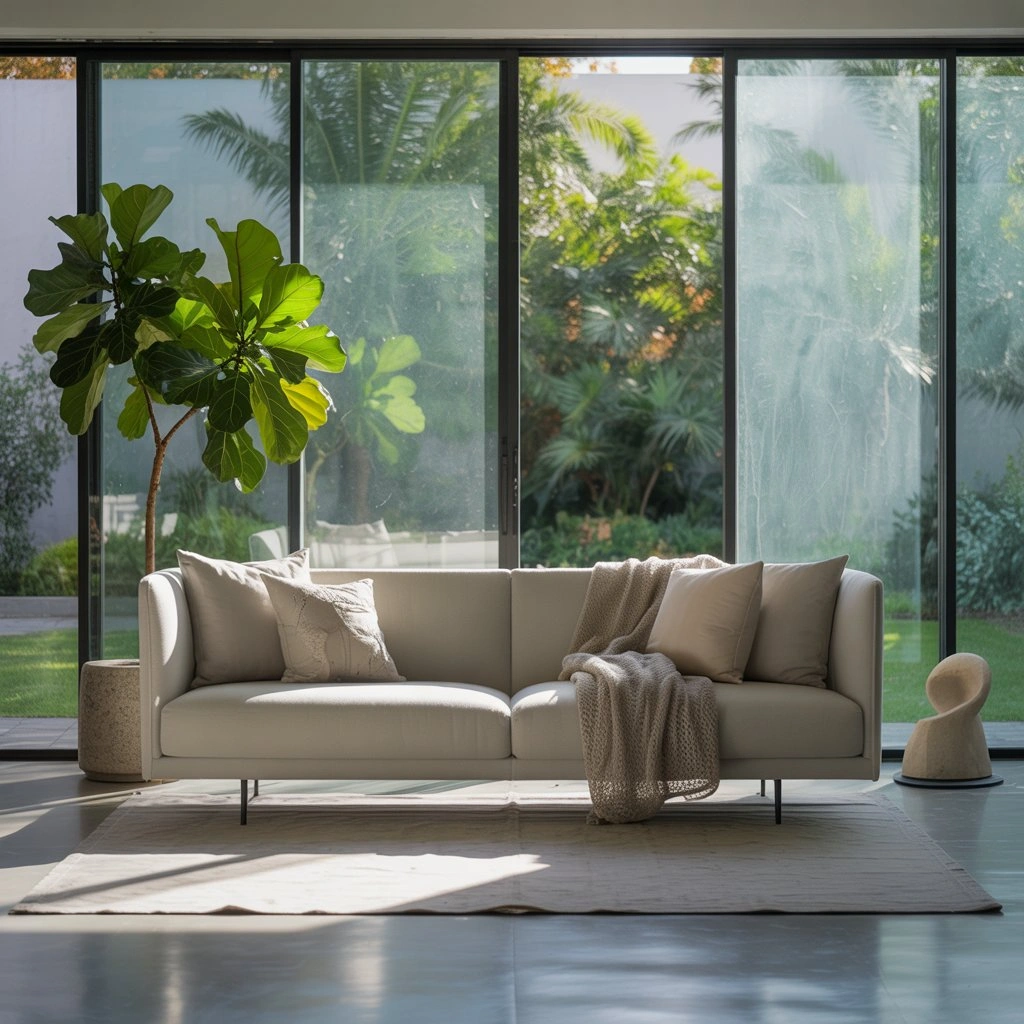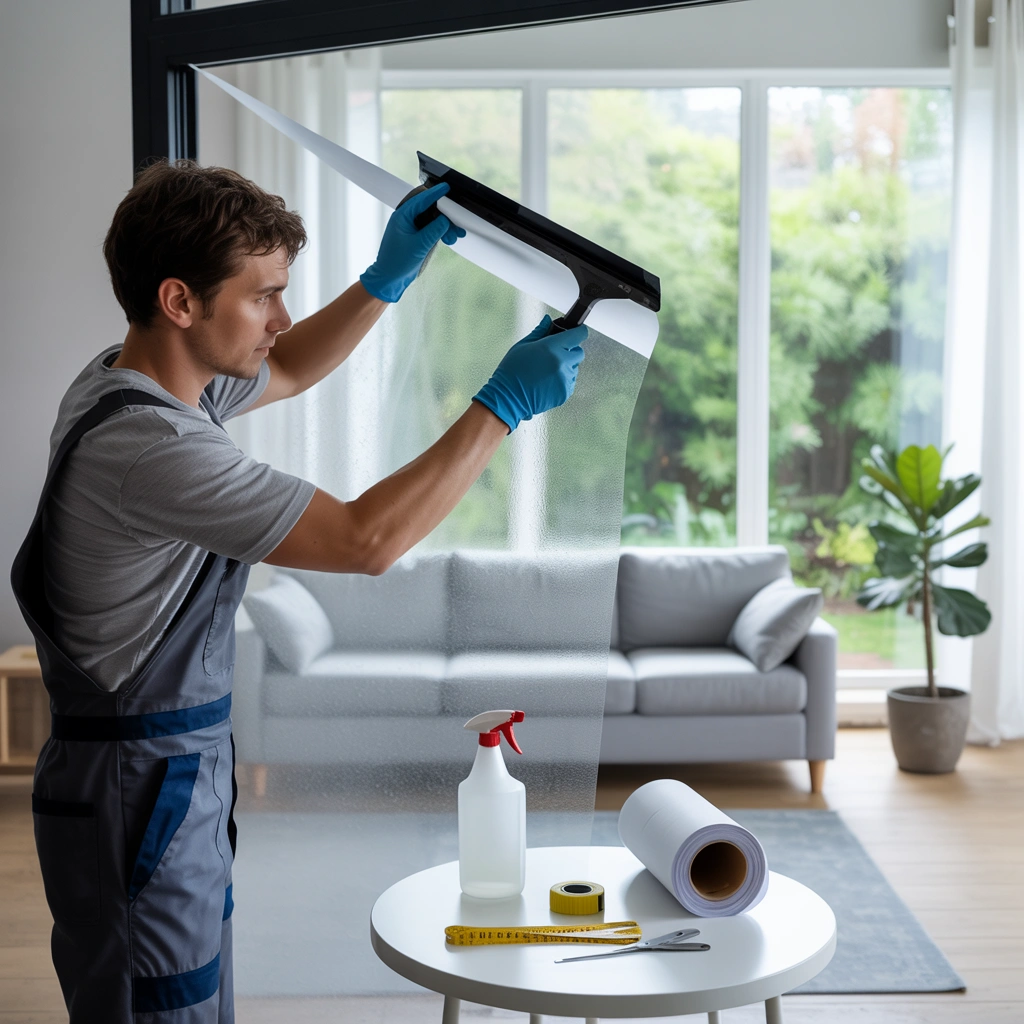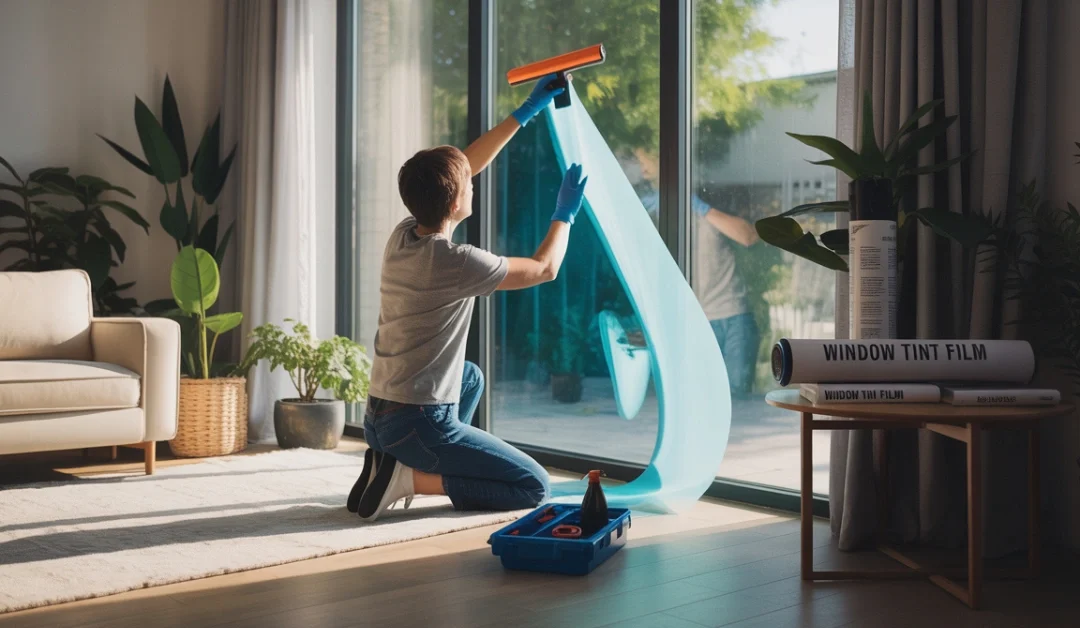Window tinting is often chosen by homeowners to make rooms cooler, darker, or more private. It is used to block sunlight, reduce glare, and save energy. But should you do it yourself or pay someone else to do it? This guide will help you decide.
1. Is window tinting becoming more popular for homes?

Yes! More homes are being fitted with window tint because it helps with heat, privacy, and even home decor. According to recent trends, many homeowners are now choosing window tinting as a low-cost way to improve comfort.
Can window tinting improve comfort and energy efficiency?
Yes! The sun’s heat is blocked by the tint, so rooms stay cooler. This means less use of air conditioning, which saves money on energy bills.
What are the top benefits of residential window tinting?
- Privacy: People outside can’t see inside easily.
- UV Protection: Harmful sun rays are stopped.
- Energy Savings: Less AC use = cheaper bills.
- Looks Better: Windows look fancier and more modern.
If you’re thinking about adding new curtains or blinds after tinting, check out Roller Blinds vs Venetian vs Vertical Blinds for tips on matching window treatments.
2. How does window tint work on residential glass?
Window tint is a thin film that is stuck onto glass. It comes in many colors and styles. When sunlight hits the window, the tint blocks some of the heat and light.
Does window tinting help with glare, heat, and UV rays?
Yes! Glare from screens or lights is reduced. Heat from the sun is blocked. UV rays, which can fade furniture and harm skin, are also stopped.
Why do so many homeowners choose to tint their windows?
It’s a cheap way to make homes more comfortable and save money on energy.
3. What are the advantages of applying window tint yourself?
- Cheaper: DIY kits cost $20–$100.
- Fun Project: Some people enjoy learning new skills.
What challenges might you face with a DIY approach?
- Hard to Apply: Bubbles or wrinkles can happen.
- Time: Takes longer if you’re new to it.
Who should consider doing their window tinting?
People who are patient, have time, and want to save money.
4. Are there major benefits to hiring an expert?
Yes! Professionals do it faster, with fewer mistakes. They also use better materials — another reason why Window Films Are a Smart Choice for Your Home.
How much does it cost to hire someone to tint your windows?
On average, $5–$15 per square foot. Small windows might cost $20–$50 each.
What can you expect during a professional installation?
- Measuring: The pro checks window sizes.
- Cutting: Film is cut to fit.
- Applying: The film is stuck on with special tools.
5. How much money can you save by doing it yourself?
DIY kits cost $20–$100. Hiring a pro might cost $200–$1,000 for a whole house.
Do professionals offer better quality and durability?
Yes! Pros use better tools and materials. Their tint lasts longer.
Which option takes less time and effort: DIY or pro?
Pros finish faster. DIY takes hours and can be frustrating.
6. What tools and materials do you need for DIY window tinting?

- Tint film
- Squeegee
- Spray bottle with water and soap
- Scissors or a utility knife
How do you prepare your windows before applying film?
Windows are cleaned with soapy water to remove dust and dirt.
What tips help you avoid bubbles and achieve a clean finish?
Spray the window and film with soapy water. Slide the film on slowly and squeegee out bubbles.
7. What’s the average price per window or square foot?
- Small window: $20–$50
- Large window: $50–$100
- Whole house: $200–$1,000
What factors influence the final cost of professional tinting?
- Size of windows
- Type of film
- Location (city vs. rural area)
8. What’s the difference between solar control and decorative films?
- Solar Control: Blocks heat and UV rays.
- Decorative: Looks pretty but doesn’t block heat.
Are security films worth considering for home use?
Yes! They make glass harder to break, which keeps homes safer.
If you’re choosing between decor options, check out Grass Cloth Wallpaper vs Peel-Stick Wallpaper for ideas on matching textures and styles.
9. Why is cleaning the glass properly so important?
Dust or dirt under the film causes bubbles and wrinkles.
What happens if you measure or cut the film incorrectly?
Too big = wrinkled edges. Too small = gaps around the window.
10. What are the key factors to weigh before deciding?
- Budget: Can you afford a pro?
- Time: Do you have hours to spare?
- Skill Level: Are you patient and careful?
How should budget, skill level, and goals influence your choice?
- Low Budget + Time: DIY.
- Want Quality + Speed: Hire a pro.
What’s the best next step after making your decision?
If DIY, buy a kit. If hiring a pro, search online for “window tinting near me.”
11. Real-Life Example: A Homeowner’s Choice
Jane, a homeowner in Florida, wanted to tint her windows to block heat. She compared DIY and pro options.
- DIY: She found a $50 kit online but spent 6 hours applying it. The result had bubbles.
- Pro: A local company quoted $600 for all windows. The job took 2 hours and looked perfect.
Jane decided to hire a pro next time. “It’s worth paying for smooth, bubble-free results,” she said.
12. What should you look for in a window tinting company?
- Experience: How many years have they been in business?
- Warranty: Do they offer a guarantee on materials or labor?
- Reviews: Check online ratings and ask for references.
What questions should you ask before hiring?
- “What type of film do you use?”
- “How long will the installation take?”
- “Can you show me examples of past work?”
13. Types of Window Tint Films Explained
1. Solar Control Films
Designed to block heat and UV rays. Often used in sunny areas.
2. Decorative Films
Add style to windows, but don’t block heat. Great for bathrooms or frosted looks.
3. Security Films
Thicker films make glass harder to break. Used for safety in homes or businesses.
4. Reflective Films
Shiny on the outside, these block glare but may not be allowed in some neighborhoods.
For more on matching decor, see Arabic Majlis vs Modern Sofa for design inspiration.
14. Cost Breakdown: What Affects the Price?
1. Size of Windows
Larger windows cost more to tint.
2. Type of Film
Basic films are cheaper than high-end solar or security films.
3. Location
Cities often charge more than rural areas.
4. Number of Windows
Tinting one window is cheaper than a full house.
15. Window Tinting and Home Value
Does window tinting increase home value?
It can! Buyers like energy-efficient homes. Tinted windows are seen as a bonus.
What other upgrades pair well with window tinting?
- Curtains or Blinds: Match colors to your tinted windows.
- Flooring: Darker floors can offset bright rooms. See Carpet Tiles vs Wood Flooring for ideas.
16. What Are the Most Common Window Tinting Questions?
Mostly yes, but some places have rules about darkness.
2–5 years. Pros last 10+ years.
Maybe! Buyers like energy-efficient homes.
No, if applied correctly.
Yes! It can be peeled off without harming the glass.

